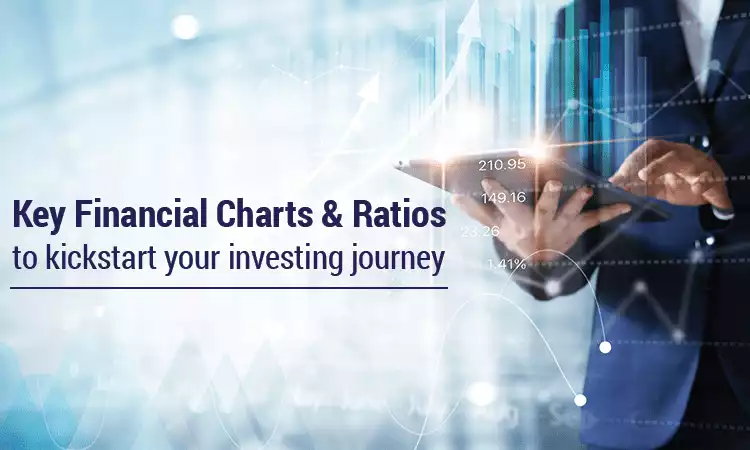5 charts and ratios to kickstart your investing journey

To a layman, capital markets would seem like a complex mesh of financial numbers. Hundreds of traders placing thousands of orders every second. The seemingly complex nature of the market deters many potential investors from accessing the markets directly. Investing in the equity markets without proper research and understanding is akin to playing with fire, the end result may be disastrous. One cannot perfect the art of investing in a day but can start with understanding the basic financial ratios and charts. Here are five financial charts and ratios to kickstart your investing journey.
The price-to-earnings ratio
One of the most basic financial ratios, the price to earnings ratio helps investors gauge what the market is willing to pay for a company’s earnings. It gives a peek into the profitability of the company and how valuable it will be in the future. The price-to-earnings ratio is a simple tool to ascertain the underlying value of the share. It is the ratio between the company’s current share price and its earnings per share. To get the P/E ratio, you will first have to calculate the earnings per share of the company. It is calculated by dividing the net income of a company by the total number of outstanding shares. The P/E ratio is calculated by dividing the current market price of a share by the earnings per share. A high P/E ratio signifies the potential for growth, but the P/E ratio varies from sector to sector. Some sectors such as sugar, fertiliser and mining have low P/E ratio, while consumer-facing sectors like FMCG and pharma typically have high P/E ratios.
Debt-to-equity ratio
The debt-to-equity ratio is a financial ratio that is used by investors to compare a company’s liabilities with its equity. It gives an idea of the proportion of financing the company has received from investors and debtors. A high level of D/E ratio signifies a leveraged balance sheet, which may not be a signal of a healthy business. Companies with a lower D/E ratio are considered to be more stable. A high D/E ratio also means that the company will have to pay a significant amount of income as an interest to service the high level of debt. To calculate the D/E ratio, you will have to divide the total liabilities of a company by the total equity. The acceptable D/E ratio varies between industries.
Price-to-sales ratio
One of the benefits of financial ratios is that they provide crucial information about the actual value of a company. The price-to-sales ratio is one of the most important financial ratios that help in valuing a stock. It uses a company’s market capitalisation and its sales to determine the valuation of a stock. It is calculated by dividing a company’s market capitalisation by the total revenue or sales in the last 12 months. The price-to-sales ratio can be utilised to value companies that have immense growth potential but are yet to turn profitable. The lower the price-to-sales ratio, the more attractive is the investment.
Line chart
Line charts are the perfect financial chart for beginners as they provide uncluttered information. Used for technical analysis, line charts are formed by plotting the closing price of a security. The closing price of a stock is plotted on the vertical axis, while the time is displayed from left to right on the horizontal axis. It gives a clear picture of the price movement over a period of time which helps in determining the support and resistance levels and the trend lines.
Price by volume chart
Just like a line chart, a price by volume chart is used for technical analysis to determine dominant support and resistance levels. When used in combination with line charts, price by volume charts can help in predicting support and resistance levels. It is plotted horizontally on a security’s chart to show the volume of shares traded at a specific price point.
Conclusion
Even though the mentioned financial charts and ratios are helpful, they may not be enough to determine the final value of a security. You should use the basic financial ratios in conjunction with advanced charts and ratios. If you do not want to calculate these ratios manually, an IIFL Demat and Trading account can be of immense help. IIFL Demat and Trading account offers personalised portfolio analysis along with other relevant financial data.
Disclaimer : The information in this blog is for general purposes only and may change without notice. It does not constitute legal, tax, or financial advice. Readers should seek professional guidance and make decisions at their own discretion. IIFL Finance is not liable for any reliance on this content. Read more



